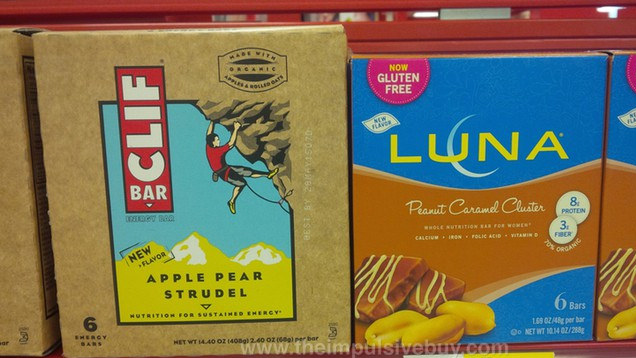Men and women belong to the same species and need to eat basically the same food. So why are there “women’s” nutrition bars? The answer is a teensy smidgen of science and a whole lot of marketing.
Photo by theimpulsivebuy.
For example, women need more iron than men. So a blueberry Luna bar contains 30 per cent of your daily requirement of iron, while the larger Clif bar only has 10 per cent. (The label percentages are always based on whoever’s need is higher; in this case, women’s.) But are you really in danger of iron deficiency if you buy the “men’s” bars? Not likely. Stephanie Grob Plante writes at Racked:
Special formulations seek to fulfil the perceived need for gender-specific nutrition, but these brands also operate in pursuit of what they believe women want: dessert minus the hypothetical pounds.
. . .
“I think of them as vitamin-supplemented cookies,” says New York University nutrition and food studies professor Marion Nestle. “People who eat a variety of relatively unprocessed foods, including fruits and vegetables, and who are taking in enough calories, really don’t need to worry about single nutrients. The foods take care of them.”
It goes both ways, too. Our own Whitson Gordon, notes that ThinkThin bars are actually a great low-sugar, high-protein bar for people that aren’t trying to lose weight, despite the way they’re marketed. It’s best to recognise the girly packaging for what it is — marketing — and let the contents and the nutrition label speak for themselves.
The Stereotype-Driven Business of Selling Nutrition Bars to Women [Racked]

Comments
3 responses to “Don’t Worry About The ‘Gender’ Of Your Nutrition Bars”
Same thing happens with a lot of women’s vs men’s products, shampoo and deodorant, spring to mind immediately but the list is long and shameful. Marketing vs integrity is the basis of the issue.
You should worry, and then buy the men’s bars seeing as they are cheaper
I thought that women’s nutrition bars may contain more oestrogen and/or phytoestrogens?